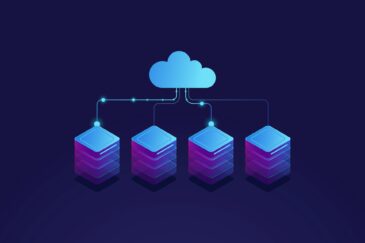How to Avoid Common Pitfalls During Legacy Application Migration

- March 6, 2024
- Mohammed Nadeem Uddin
- 0
Companies migrate legacy applications to the cloud primarily to leverage the numerous benefits of the cloud. First and foremost, the cloud offers scalability, enabling businesses to scale resources up or down in response to demand instantly. This is particularly helpful for legacy systems with irregular usage patterns. This scalability ensures that companies can efficiently meet growing demands without significant upfront investments in infrastructure. Additionally, the cloud offers enhanced flexibility and agility, enabling companies to innovate and iterate more rapidly. By migrating legacy applications to the cloud, companies can use cloud-native features and services, such as managed databases, serverless computing, and containerization, to modernize their applications and improve performance and reliability.
Additionally, migrating legacy applications to the cloud allows companies to reduce operational costs and improve resource utilization. Cloud computing drastically lowers the cost of hardware and maintenance by eliminating the requirement for businesses to manage and maintain on-premises infrastructure. Furthermore, with its cloud services for a pay-as-you-go pricing model, businesses can save money and have more predictability by paying for only the resources they use. Moreover, the cloud offers improved security and compliance, with cloud providers investing heavily in security measures and compliance certifications. By migrating legacy applications to the cloud, companies can enhance data security, ensure regulatory compliance, and mitigate the risk of data breaches, increasing stakeholder trust. Migration of legacy applications to the cloud can be difficult, but you can avoid common pitfalls with careful planning. Here are some steps to help you avoid these pitfalls:Thorough Assessment and Planning
Select the Right Cloud Environment
Address Security and Compliance Concerns
Optimize for Cloud
Data Migration Strategy
Testing and Validation
Training and Documentation
Continuous Monitoring and Optimization
Implementing robust monitoring and optimization practices is critical for ensuring the long-term success and performance of the migrated application in the cloud. Monitoring tools should be used to track key performance metrics, resource utilization, and security compliance, allowing you to pinpoint and mitigate any inefficiencies. Continuously optimizing the application and cloud infrastructure based on usage patterns, performance data, and cost analysis helps maximize efficiency, minimize costs, and ensure optimal performance over time. By embracing a continual monitoring and optimization culture, organizations can adapt and evolve their cloud environment to meet changing business needs and drive continuous improvement and innovation.
Data Migration to the Cloud
Legacy applications often store vast amounts of critical data, and migrating this data to the cloud requires careful planning and execution to enable a smooth migration. Data migration tools streamline this process by automating manual tasks such as data mapping, transformation, and validation, reducing the risk of errors and minimizing downtime. These tools typically offer features like extensive mapping capabilities, automated data migration, and data validation, helping organizations ensure data accuracy and integrity throughout the migration process. By leveraging data migration tools, enterprises can accelerate the migration process, minimize disruption to business operations, and unlock the full benefits of the cloud more efficiently.
ConvertRite is an Oracle data migration tool from Rite Software that can minimize the complexities, risks, and costs associated with Oracle Cloud data migrations, particularly those involving legacy application migration to the cloud. Enterprises often face implementation costs, business disruptions, and complex data conversion challenges during these migrations. ConvertRite aims to mitigate these roadblocks by offering features like zero code implementation, extensive mapping capabilities, and automated data migration, resulting in 40% less implementation costs and higher data accuracy. This HIPAA-compliant tool, built on Oracle PaaS, streamlines the migration process from legacy applications to the cloud, including popular systems like EBS, PeopleSoft, JD Edwards, and SAP. By automating manual, time-consuming, and error-prone tasks such as data mapping and validation, ConvertRite accelerates the data migration process, making the shift to Oracle Cloud Applications easier and faster for enterprises.
Services
Products
Company
Copyright © 2024 Rite Software Solutions & Services LLP. All rights reserved.



